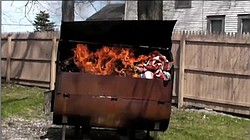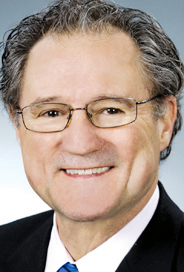Legion post, Scouts honorably dispose of flags
Flag Retirement


Rep. Robert F. Hagan, D-Youngstown. (AP Photo/Larry Phillips)
American flags can be burned or buried.
American flags take a beating.
Whether in combat or out in the weather, the flag of the United States of America eventually frays, rips or loses its colors.
American Legion Post 472, at 323 E. Indianola Ave., Youngstown, had its 2009 American Flag Retirement Ceremony on Saturday afternoon.
Bob Raver, interim commander of the post, said the ceremony takes care of the Stars and Stripes, “the way you are supposed to.”
He added, “We don’t want people to throw them away.”
Flags can be burned or buried, both with proper honors.
About 200 flags were collected for Saturday’s event.
Just before the program began, Raver said, “People are still bringing them in.”
The colors on some were almost gone, and others were torn.
“Some of them are really old,” he added.
One flag that was burned was a 48-star version made before Alaska and Hawaii became part of the union.
The flags wear out so fast the retirement ceremony takes place every 12 to 18 months.
Raver said that when he saw the number of flags that had been collected, he scheduled another ceremony.
State Rep. Robert F. Hagan, D-60th, of Youngstown was the speaker. He brought a new Ohio flag for the Legion post.
Hagan said the ceremony recalled, “the rights so many veterans fought for.”
The American men and women who have served in the Middle East conflicts are part of a long tradition of service, he said.
“We’ve spread democracy across the world,” Hagan said.
The worn flags were placed in a large metal drum with a small amount of mineral spirits. The program called for Paul Cetor, the sergeant-at-arms, to present some of the worn flags to Raver. Cetor said the flags were too worn to be used.
The samples were added to the container and were set on fire.
The American spirit is also still on fire. Mike Scanlon is the commander of the Sons of the Legion that is now based at the Legion.
Scanlon, like other Americans, was too young to fight in long-ago wars. But men or women who did not serve in wars can join the Sons of the Legion and take part in community programs. Response to the group is good, Scanlon said, noting that 60 new members have joined since January.
wilkinson@vindy.com
 43
43
